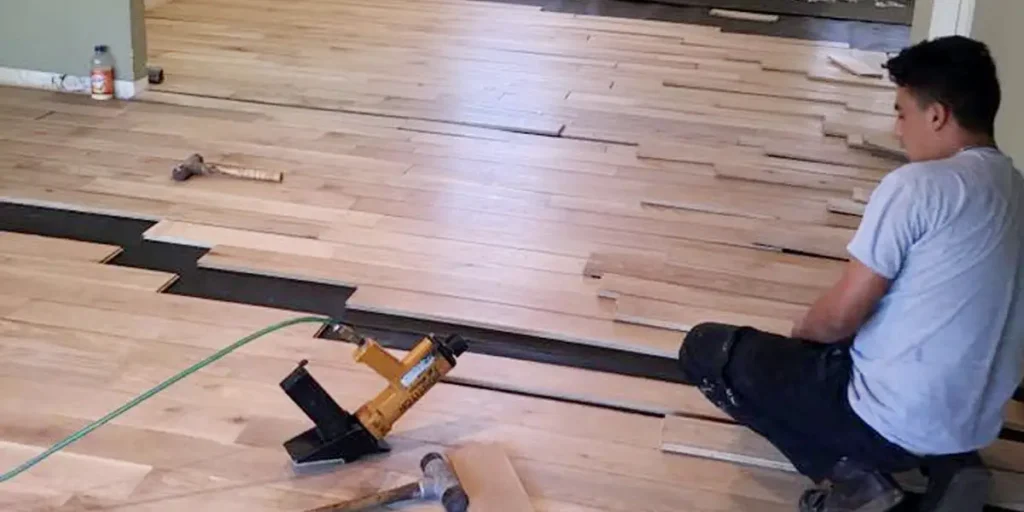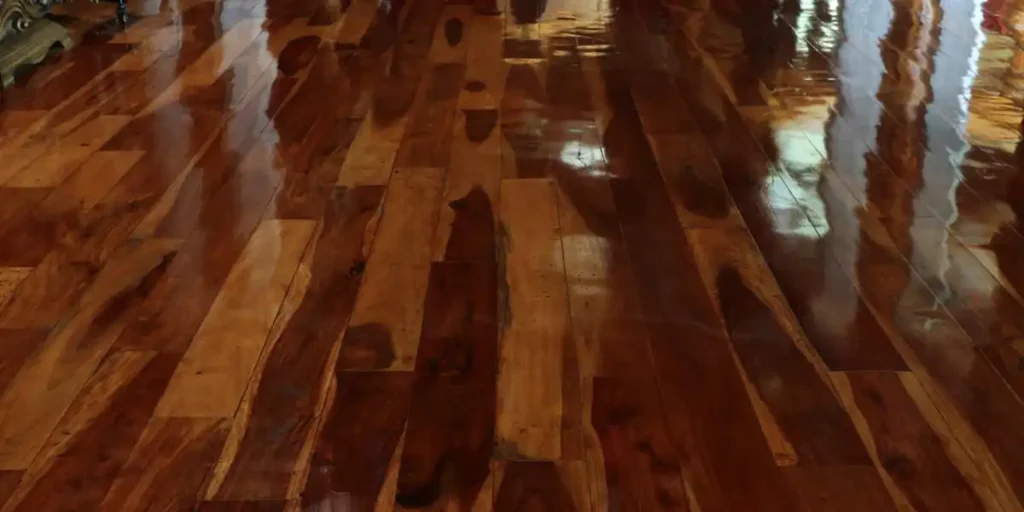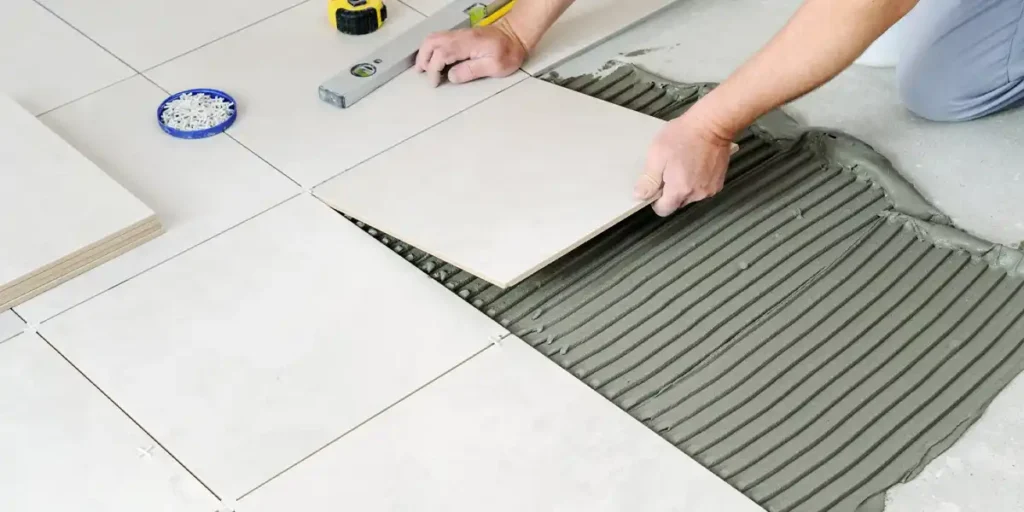So, you’re ready to say goodbye to your old tile flooring. Whether it’s chipped, outdated, or simply no longer your style, removing tile flooring can seem like a daunting task.
But fear not! With the right tools, techniques, and a step-by-step plan, even a novice DIYer can tackle this project successfully.
This guide will walk you through how to remove tile flooring efficiently and safely, ensuring your home improvement journey starts off on the right foot.
Assessing Your Tile Situation: Before You Begin
Identifying Your Tile Type
The first step in your tile removal project is understanding the type of tile you’re dealing with. Ceramic tiles are typically easier to remove due to their less dense structure, while porcelain tiles require more effort because of their durability. If you’re dealing with stone tiles, you’ll need even heavier-duty tools. Knowing your tile type helps you choose the right removal strategy and tools.
Understanding the Subfloor
Beneath the tiles lies the subfloor, usually concrete, plywood, or cement board. Understanding the subfloor is crucial because it determines how carefully you’ll need to work and what repairs, if any, may be needed after removal. For instance, wood subfloors require a gentler approach to prevent damage, whereas concrete subfloors can handle a bit more force.
Safety First: Essential Gear
Tile removal can be messy and hazardous. Always equip yourself with the following protective gear:
- Safety Glasses: Protect your eyes from flying shards of tile.
- Dust Mask: Prevent inhalation of dust, which can be harmful, especially if the tiles or adhesives contain old materials.
- Work Gloves: Keep your hands safe from sharp edges and abrasive materials.
- Sturdy Footwear: Ensure your feet are protected from falling debris.
Step-by-Step Guide: How to Remove Tile Flooring
Step 1: Preparation is Key
Before any tiles are lifted, prep the space. Clear the room of furniture and appliances, and cover vents, baseboards, and walls with plastic sheeting to prevent dust from spreading. If you’re removing tiles in a kitchen or bathroom, shut off utilities and remove fixtures like toilets and sinks as needed.
Step 2: Score the Grout
Using a grout saw or oscillating multi-tool, carefully score along the grout lines. This step weakens the bonds holding the tiles together, making it easier to remove them individually. For tiles with particularly thick grout, multiple passes may be necessary.
Step 3: Breaking Up the Tiles
Once the grout is scored, start breaking up the tiles. Use a hammer and chisel, or a power tool like a tile scraper for faster results. Insert the chisel under the edge of a tile, tapping gently with the hammer until it lifts. Work methodically, removing one tile at a time to avoid damaging the subfloor.
Step 4: Removing the Thinset
After the tiles are removed, the thinset or adhesive mortar must be scraped off the subfloor. Use a floor scraper or grinder for larger areas. Thinset can be stubborn, so patience is key. Removing all traces ensures your new flooring will adhere properly.
Step 5: Cleaning Up the Mess
Collect all tile shards, grout debris, and dust with a shop vacuum and heavy-duty trash bags. Dispose of the debris responsibly by checking local regulations for construction waste disposal.
Dealing with Stubborn Tiles and Unexpected Challenges
Stubborn Tiles
If certain tiles refuse to budge, don’t panic. Heat can loosen stubborn adhesive—try using a heat gun to soften the thinset. Alternatively, a demolition hammer can help break apart tiles without too much effort.
Unexpected Surprises
Sometimes, tile removal reveals hidden issues, such as damaged subflooring, old plumbing, or even mold. If you encounter unexpected problems, consult a professional to ensure they’re addressed before proceeding with new flooring installation.
Different Approaches for Specific Subfloors
Concrete Subfloors
Removing tiles from concrete subfloors can be physically demanding due to the hard surface. Use heavy-duty tools like a demolition hammer for efficiency. Be prepared for stubborn thinset and take your time to ensure a clean finish.
Wood Subfloors
Wood subfloors require a lighter touch to prevent damage. Use smaller tools and avoid excessive force when prying up tiles. Once tiles and thinset are removed, check for any signs of water damage or rot.
Final Thoughts
Removing tile flooring may seem intimidating, but with the right preparation, tools, and safety measures, it’s a manageable DIY project. Whether you’re preparing for a complete remodel or simply refreshing your floors, following this guide ensures a successful outcome.
Remember, patience is key taking your time ensures you won’t damage the subfloor, setting the stage for your beautiful new flooring. Good luck!
Ready to transform your home through tile flooring? Contact Cardenas Flooring today for expert guidance and professional tiling solutions!
FAQs
Can I remove tile flooring myself, or should I hire a professional?
Yes, DIY tile removal is possible with proper tools and techniques, but it requires effort and time. For larger spaces or older tiles with possible asbestos content, hiring a professional ensures safety and efficiency. Professionals have access to specialized tools and can handle unexpected challenges like damaged subfloors or hazardous materials effectively.
What tools do I need to remove tile flooring?
Essential tools include a hammer, chisel, grout saw, scraper, and shop vacuum. For tougher tiles, a demolition hammer or power scraper may be necessary. Safety gear—such as gloves, goggles, and a dust mask—is critical. For adhesive removal, consider a floor grinder or heavy-duty scraper.
How long does it take to remove tile flooring?
Timeframes vary based on the area size, tile type, and subfloor. A small bathroom may take 6–8 hours, while larger spaces like kitchens can require 2–3 days. Using power tools speeds up the process, but stubborn tiles or adhesive removal can extend the timeline.
What should I do with the old tile and debris?
Dispose of debris responsibly by checking local waste management guidelines. Recycling centers or construction waste facilities often accept tile debris for a fee. For large projects, renting a dumpster or using a hauling service can simplify disposal. Consider donating intact tiles to organizations like Habitat for Humanity.
What type of flooring can I install after removing tile?
Popular options include hardwood, vinyl, laminate, or new tile. Before installation, ensure the subfloor is clean, level, and damage-free. Address repairs like filling cracks or replacing rotted wood to create a stable surface for the new flooring. Always follow manufacturer guidelines for your




